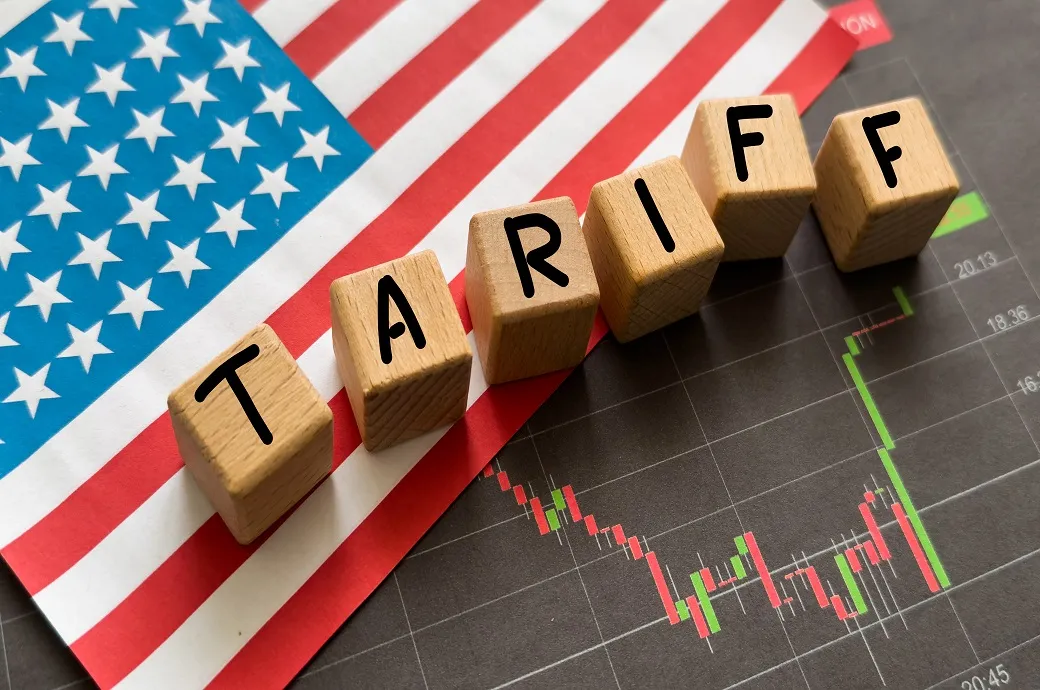The Indian stock market is bracing for what analysts are calling a “Terrible Thursday” following President Donald Trump’s unexpected announcement of a 25% tariff on Indian goods, effective August 1, 2025. This development has already triggered significant volatility in pre-market trading, with GIFT Nifty futures plummeting and investors scrambling to assess the potential impact on their portfolios.
The Tariff Bombshell: What Trump Announced
In a characteristically bold move on his Truth Social platform, President Trump declared that India would face a 25% tariff starting August 1, citing what he called “among the highest” tariffs in the world imposed by India and “the most strenuous and obnoxious non-monetary Trade Barriers of any Country.” The announcement came as a shock to many, particularly given the ongoing negotiations between the two nations that many hoped would yield a more favorable outcome.
The tariff decision wasn’t made in isolation. Trump specifically criticized India’s continued energy purchases from Russia, stating that India remains “Russia’s largest buyer of ENERGY, along with China, at a time when everyone wants Russia to STOP THE KILLING IN UKRAINE.” This geopolitical dimension adds another layer of complexity to what was already a challenging trade relationship.
Immediate Market Reaction: GIFT Nifty Signals Trouble Ahead
The market’s initial response was swift and unforgiving. GIFT Nifty futures, which serve as an early indicator of how Indian markets might perform, crashed to 24,678 points before settling at 24,700 – a decline of 160 points or 0.63%. This sharp drop signals a gap-down opening for Indian stock markets, setting the stage for what could be a volatile trading session.
The timing couldn’t be worse for Indian markets, as the tariff announcement coincides with the monthly derivatives expiry. As Anirudh Garg, Fund Manager at INVasset PMS, explains, “On expiry days, volatility tends to spike as traders roll over positions and settle futures and options contracts. With Gift Nifty already reacting negatively, we could see that sentiment spill over into domestic markets at the open.”
Expert Analysis: Knee-Jerk Reaction vs. Long-Term Impact
While the immediate market reaction appears severe, financial experts are taking a measured approach to assessing the long-term implications. The consensus suggests that while a knee-jerk reaction is inevitable, the actual economic impact may be more limited than the market’s initial response suggests.
Kranthi Bathini, Director of Equity Strategy at WealthMills Securities, offers a pragmatic perspective on Trump’s negotiating style: “The issue with Trump is that he often says one thing today and something completely different tomorrow. What is certain is the uncertain nature of Trump’s approach.” This observation highlights the challenge investors face in distinguishing between political posturing and concrete policy implementation.
Sectoral Impact Assessment: Who Gets Hit Hardest?
The tariff announcement is expected to disproportionately affect certain sectors of the Indian economy. Export-oriented industries, particularly engineering, gems and jewelry, and textiles, are likely to bear the brunt of the impact. These sectors have significant exposure to the US market and could see their profit margins compressed under the new tariff regime.
However, the broader economic impact may be more contained than initially feared. India’s export exposure to the United States, while significant, represents about $77.5 billion in 2024 – substantial but not overwhelming when viewed against India’s total economic output. According to analysis by market experts, the estimated GDP impact ranges between $3-8 billion, translating to approximately ₹25,000-₹66,000 crore, or roughly 0.07-0.2% of GDP.
The Silver Lining: India’s Economic Resilience
Despite the immediate concerns, several factors work in India’s favor. The country’s robust domestic demand base provides a cushion against external shocks, while government initiatives like the Production Linked Incentive (PLI) scheme continue to drive capital expenditure momentum. Additionally, India’s improving geopolitical positioning offers alternative pathways for economic growth and trade diversification.
Anirudh Garg emphasizes this point: “This is not disruptive when set against India’s strong domestic demand base, PLI-led capex momentum, and geopolitical tailwinds.” This perspective suggests that while short-term volatility is expected, the fundamental drivers of India’s economic growth remain intact.
Investment Strategy: Navigating the Turbulence
For investors, the current situation presents both challenges and opportunities. The immediate focus should be on managing risk and avoiding panic-driven decisions. Export-heavy stocks may see continued pressure in the near term, but this could also create attractive entry points for long-term investors.
Market veterans suggest looking beyond the headline noise to identify companies with strong domestic market positions and those that might benefit from import substitution trends. The tariff situation could accelerate India’s push toward self-reliance in key sectors, potentially benefiting domestic manufacturers.
Historical Context: Trade Wars and Market Recovery
It’s worth remembering that markets have weathered similar trade-related storms in the past. The US-China trade tensions of Trump’s previous presidency created significant volatility, but markets eventually adapted and found new equilibrium points. Indian markets, known for their resilience, have historically recovered from external shocks, often emerging stronger.
Looking Ahead: Diplomatic Solutions and Market Adaptation
While the 25% tariff rate is higher than the 19% offered to Indonesia and the Philippines, diplomatic channels remain open. Both nations have too much at stake to allow trade relations to deteriorate completely. The coming weeks will be crucial in determining whether this is the opening gambit in a negotiation or a firm policy stance.
The Bottom Line: Volatility with Underlying Strength
Thursday’s trading session is likely to be challenging for Indian markets, with gap-down openings and increased volatility almost certain. However, investors should resist the urge to make hasty decisions based on short-term market movements. India’s economic fundamentals remain strong, and the country’s long-term growth story continues to be compelling.
The key for investors is to maintain perspective, focus on quality companies with strong domestic positioning, and view any significant market corrections as potential opportunities rather than reasons for panic. As markets have shown time and again, initial reactions to policy announcements often overstate both positive and negative impacts.
While Thursday may indeed be “terrible” for Dalal Street, it’s important to remember that temporary setbacks often pave the way for stronger, more sustainable growth trajectories.

